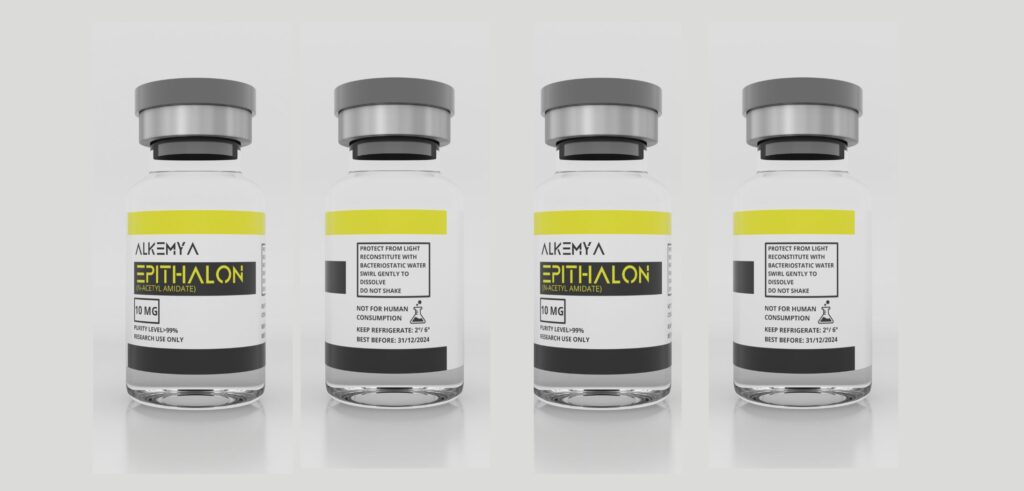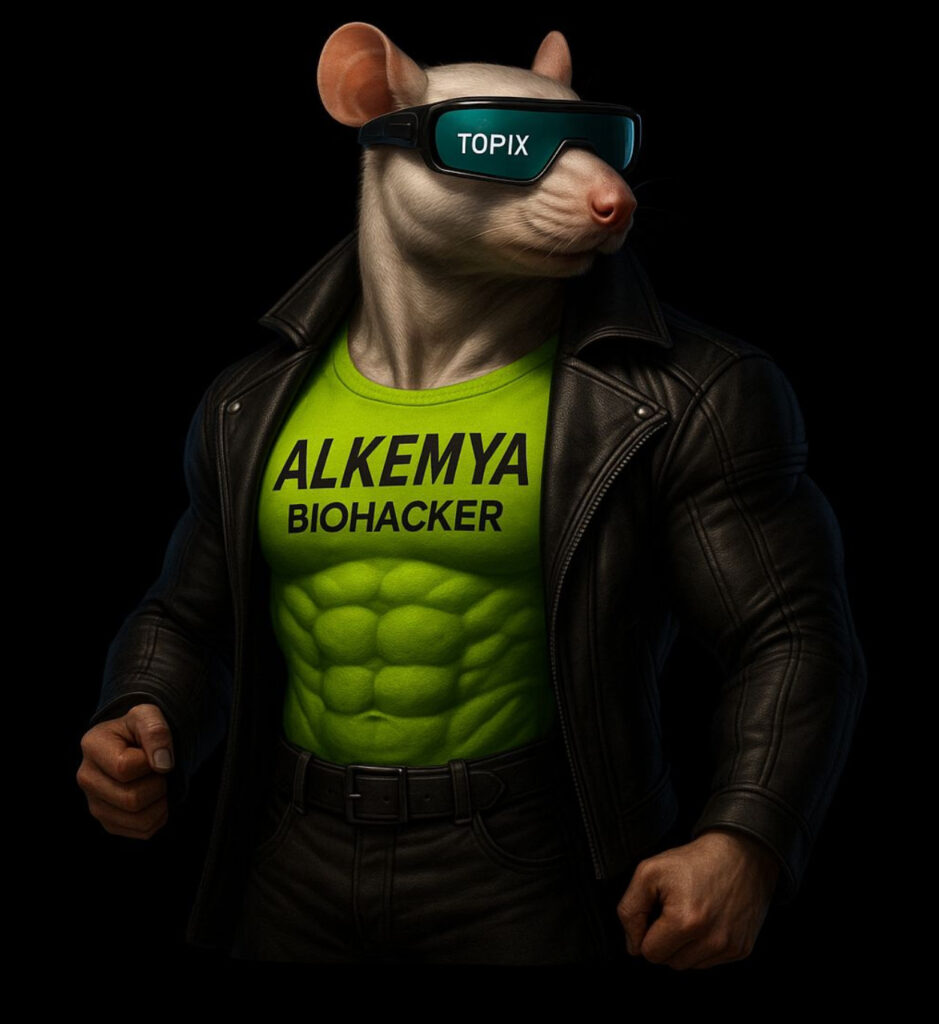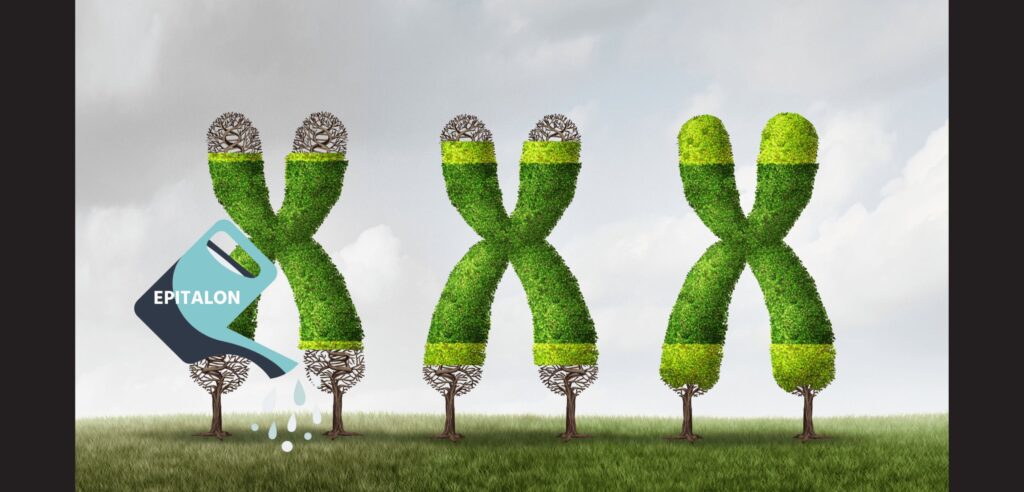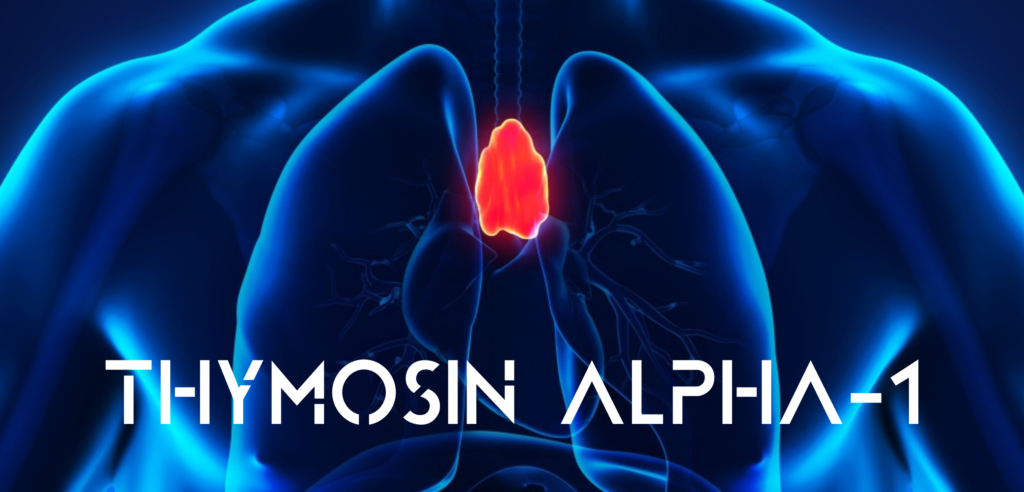Epitalon is a powerful anti-aging peptide
derived from epitalamine.
The specific sequence of amino acids in Epitalon is Alanine-Glutamine-Asparagine-Glycine.
This sequence is often represented as Ala-Glu-Asp-Gly.
Epitalamin is a hormone produced by the pineal gland.
Epitalamin is known for its effects on the regulation of circadian rhythms and the production of melatonin, a hormone that regulates sleep.
Epitalamin has also been studied for its effects on longevity and prevention of age-related diseases.
Some studies suggest that it may have a positive impact on lifespan, immune function, and other aspects of health.
Epitalon was discovered in the 1980s by Russian scientist Vladmir Anisimov, who specialized in the field of gerontology (i.e., the study of aging in elderly individuals).
However, the man who really brought Epitalon to prominence was Dr. Vladmir Khavinson, who at the time was working at the Institute of Bioregulation and Gerontology in St. Petersburg.
It was part of his larger 10-year research project in the field of peptide bioregulators. “The theory proposed by Professor Khavinson is based on the basic hypothesis that changes in gene expression lead to reduced protein synthesis, eventually leading to aging and disease development.
Stimulation of peptide production through the use of “peptide bioregulators” is designed to influence a specific organ, system or condition in the body by using a highly specific short-chain peptide to act as a shortcut to initiate protein synthesis and increase organ function.

Peptide bioregulators-discovered and first studied in the 1980s by Professor Khavinson-are based on the assumption that each organ in the body uses a very specific peptide that acts like a gene switch, triggering or “regulating” a biological reserve.
When isolated from individual organs and glands, these specific peptides stimulate protein synthesis in the tissues from which they are derived.”
Khavinson was also the scientist responsible for numerous patents related to the use of Epitalon, and it has been approved for general use in Russia since 1990.
How does Epitalon work?
We could go into the very complicated details of how Epitalon works in the human body, but here is the primary mechanism of action:
Epitalon’s main role is to increase the natural production of telomerase, a natural enzyme that helps cells reproduce telomeres, which are the protective parts of our DNA.
This allows our DNA to replicate so that the body can grow new cells and rejuvenate old ones.
Young people produce a relatively large amount of telomerase and have longer telomeres.
The longer the telomere strands, the better health and cell replication they provide.
However, with advancing age, telomerase production decreases and consequently cellular replication and health decline. This is the main reason why people age.”
To really understand why this is so important, we need to look at something called the Hayflick effect:
A telomere protects DNA from unraveling during each cell division.
Each cell division results in a slight reduction in the length of the telomere, and eventually the cell can no longer divide.
This is called the Hayflick limit, named after Dr. Leonard Hayflick who discovered that cells have a limited number of times they can divide.
The pineal gland produces a hormone called epithalamin that tells cells to produce telomerase, which in turn leads to longer telomeres in our DNA.
Pineal gland function declines with age and is partly responsible for age-related diseases” Ben Greenfield does an excellent job of explaining the connection between Epitalon and the Hayflick effect in his book Boundless:
After fifty to seventy divisions, cells can no longer divide and worn-out, damaged or diseased cells cannot be replaced … reaching Hayflick’s limit coincides with the death of a living organism.
In sufficient doses, epithalon allows cells to exceed their Hayflick limit, thus extending the lifespan of the organism.” ”… Professor Khavinson believes that the animal and human lifespan limit is about 30-40% longer than the current average lifespan and that the human lifespan limit is 110-120 years.
Despite Epitalon’s long history of nearly 40 years, only 122 research results appear in PubMed between 2000 and 2021.
This is because most of the studies are written in Russian and published in journals that are not always accessible in North American medical databases.
Epitalon is commonly called the “fountain of youth.”

If we look at cell culture studies, the results are obvious:
The results indicate that in human somatic cells Epithalon can induce expression of the telomerase enzyme component, telomerase activity, and telomere elongation: Epithalon is able to activate telomerase and elongate telomeres in human somatic cells, thereby improving their replication potential and functional lifespan.
These results indicate that Epithalon may have therapeutic potential for aging and age-related diseases.
Epithalon can activate telomerase and lengthen the telomeres of human somatic cells, thereby improving their replication potential and functional lifespan.
These results indicate that Epithalon may have therapeutic potential for aging and age-related diseases.”
Benefits of Epithalon.
Telomerase activity
Epithalon acts as a catalyst for the enzyme telomerase, which is responsible for lengthening telomeres. Telomeres are the ends of chromosomes that shorten each time a cell divides. By keeping telomeres longer, cells have a greater capacity for regeneration and a lower risk of premature aging.
Life Extension
Epithalon’s ability to maintain and lengthen telomeres is directly linked to cellular longevity. This could have significant implications for human lifespan, as healthier and younger cells are associated with greater longevity.
Cancer Prevention
Epithalon could reduce the risk of chromosomal instability, which is a major cause of cancer formation. Keeping telomeres long and stable reduces the likelihood of genetic mutations that can lead to cancer.
Quality of Sleep
Epithalon is known to increase levels of melatonin, the hormone that regulates sleep. Better quality sleep has a positive impact on overall health, including brain function.
DNA repair.
Epithalon’s antioxidant properties contribute to the repair of damaged DNA. This is especially important in protecting the body from chronic disease and aging.
Brain Health.
Increased melatonin levels not only improve sleep quality but also have neuroprotective effects. This may reduce the risk of neurodegenerative diseases such as Alzheimer’s and Parkinson’s.
Antioxidant Effects
Epithalon has the ability to neutralize free radicals, which are unstable molecules that can cause cellular damage. This helps protect cells from oxidative damage and slow the aging process.
Immune Function
Epithalon has immunomodulatory properties that could strengthen the immune system. A stronger immune system is essential to protect the body from infection and disease.
Epithalon and Alzheimer’s disease:
Research on Epithalon and its potential effectiveness in treating Alzheimer’s disease is still at a relatively early stage.
However, some research suggests that Epithalon may have neuroprotective effects that could be useful in the context of neurodegenerative diseases such as Alzheimer’s.
Epithalon is known to increase levels of melatonin, a hormone that regulates circadian rhythm and has been shown to have neuroprotective effects.
Studies have suggested that melatonin may play a role in protecting brain cells from oxidative damage, which is a hallmark of Alzheimer’s disease.
In addition, Epithalon’s ability to stimulate the enzyme telomerase and lengthen telomeres could have positive implications for brain health.
Longer telomeres are associated with increased cellular longevity, which could translate into protection against cognitive impairment.
In 2016 when new research, again using cultured fibroblasts, found that the effects of Epithalon go beyond telomerase activation.
Epithalon was also found to inhibit the accumulation of senescent proteins such as MMP-9.
Senescent proteins are those that emerge as a result of aging and signal cells to stop dividing.
In addition to inhibition of MMP-9 production, Epithalon has been shown to suppress caspase-dependent apoptosis.
This is one of the main processes by which cells that have short telomeres or other signs of aging are killed.
Senescent proteins, such as MMP-9 (Matrix Metalloproteinase 9), are molecules that tend to accumulate in cells as they age.
These proteins signal cells to stop dividing, thus contributing to the aging process.
Epithalon appears to inhibit the accumulation of these proteins, which could delay the signal that causes cells to enter a state of “senescence” or aging.
Apoptosis is a process of “programmed cell death.”
Caspase is an enzyme that plays a key role in the induction of this process.
Epithalon has been shown to suppress apoptosis that is caspase-dependent, which means it can prevent or delay the death of cells that show signs of aging, such as short telomeres.
All these activities-from inhibiting senescent proteins to suppressing apoptosis-are somehow related to Epithalon’s effects on telomere length.
Telomeres are the ends of chromosomes that shorten with aging and cell division.
Maintaining long telomeres is associated with increased cellular longevity.
Dosage and Administration of Epithalon.
Standard Dosage:
The standard dosage for Epithalon is 10 mg daily for 10 days to be taken once every 6 months.
This amount has been identified as effective in most available clinical studies and research.
However, it is always advisable to consult a physician or health care professional before starting any new supplementation regimen, especially if you have pre-existing medical conditions or are taking other medications.
Method of Administration:
The most common method of administration for Epithalon is through subcutaneous injections.
This method is generally considered the most effective in ensuring optimal absorption of the peptide into the body.
Subcutaneous injections are usually made with a very thin needle and are generally less painful than other types of injections.
Frequency of Administration:
It is suggested to repeat the 10-day cycle twice a year.
This frequency was proposed to maintain the long-term benefits of Epithalon, such as telomere lengthening and potential reduction of cellular aging, without incurring significant side effects.









